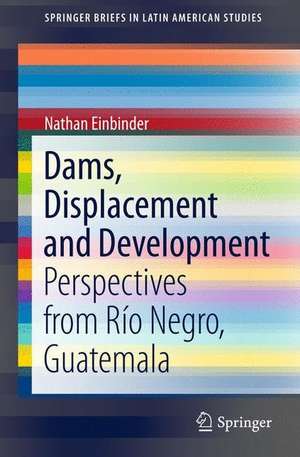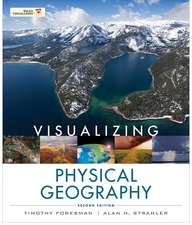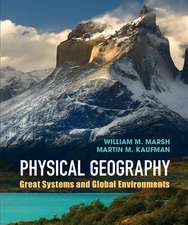Dams, Displacement and Development: Perspectives from Río Negro, Guatemala: SpringerBriefs in Latin American Studies
Autor Nathan Einbinderen Limba Engleză Paperback – 17 feb 2017
Theresearch findings presented, based on fieldwork conducted from January to April 2009, suggest that the majority of survivors from the massacres that took place are still adversely affected by the destruction of their families and livelihoods. While the circumstances pertaining to this event are unique, similar struggles over land and human rights continue into the present — and if policies remain unchanged, in both international development agencies as well as the Guatemalan government, clashes of this nature only increase in time.
Preț: 352.58 lei
Nou
Puncte Express: 529
Preț estimativ în valută:
67.46€ • 70.63$ • 55.82£
67.46€ • 70.63$ • 55.82£
Carte tipărită la comandă
Livrare economică 02-08 aprilie
Preluare comenzi: 021 569.72.76
Specificații
ISBN-13: 9783319515106
ISBN-10: 3319515101
Pagini: 94
Ilustrații: XVII, 94 p. 7 illus. in color.
Dimensiuni: 155 x 235 mm
Greutate: 0.2 kg
Ediția:1st ed. 2017
Editura: Springer International Publishing
Colecția Springer
Seria SpringerBriefs in Latin American Studies
Locul publicării:Cham, Switzerland
ISBN-10: 3319515101
Pagini: 94
Ilustrații: XVII, 94 p. 7 illus. in color.
Dimensiuni: 155 x 235 mm
Greutate: 0.2 kg
Ediția:1st ed. 2017
Editura: Springer International Publishing
Colecția Springer
Seria SpringerBriefs in Latin American Studies
Locul publicării:Cham, Switzerland
Cuprins
Acknowledgements.- Timeline of events.- Map.- List of Acronyms.- Chapter 1. Introduction and Research Design.- Chapter 2. Critical Geography and Development: A Backgrounder.- Chapter 3. Guatemala Historical Context.- Chapter 4. Río Negro and the Chixoy Dam.- Chapter 5. Lived Experiences: A Critical Analysis.- Chapter 6. Final Discussion.- Bibliography.- Appendix I-Photos.
Textul de pe ultima copertă
Using the case of the Chixoy Hydroelectric Dam in Guatemala, constructed between 1978 and 1983, this book examines the effects of displacement on the former residents of Río Negro, a community forcibly evicted and nearly eliminated by the military and paramilitary. Using open-ended interview discussions and testimonies, it focuses on this specific incident of displacement and violence and discusses the outcomes 30 years later. Guatemala’s history is plagued by development projects that resulted in displacement, violence, and increased marginalization of its indigenous and non-indigenous populations. In order to make way for development initiatives such as the production of bananas, African palm, coffee and sugar cane; the extraction of metals such as gold and nickel; or, in this specific case, the construction of a hydroelectric dam, the land-based, predominately Maya campesinos have been systematically uprooted from the lands of their birth and launched into uncertainty.
Theresearch findings presented, based on fieldwork conducted from January to April 2009, suggest that the majority of survivors from the massacres that took place are still adversely affected by the destruction of their families and livelihoods. While the circumstances pertaining to this event are unique, similar struggles over land and human rights continue into the present — and if policies remain unchanged, in both international development agencies as well as the Guatemalan government, clashes of this nature only increase in time.
Caracteristici
Provides a unique, in-depth look at the effects of mega-development projects in the developing world Includes open-ended interviews with members of the Guatemalan community in Río Negro who were displaced by the construction of the Chixoy Hydroelectric Dam Presents academic content in an accessible style Includes supplementary material: sn.pub/extras



































